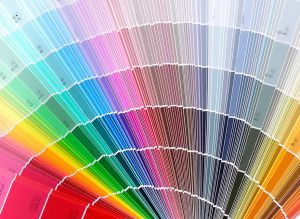Glaze painting is a technique whereby you use translucent colors on a white (or a variant of white) so that light travels through the glazed coat(s) and reflect back. This method creates a deeper and richer color, as well as creating a shimmering effect. The preparation is the same and the process only adds an extra coat of paint, or two, depending upon the effect you are trying to create.
Prepare the room you wish to paint the same way that you normally would, including filling any cracks and holes with Spackle. Then lightly sand with a fine grit of sand paper, producing a smooth finish. Use masking tape to cover the edges of the trim where it meets the wall. Cover the floors with tarps or newspaper. Have a clean rag and a bucket of water on hand in order to clean up any drips and spills.
For the base coat, select a soft white color, preferably a flat or light satin paint. It is important to apply the paint in a light coat. Two light coats are better than one heavy coat, as paint that is applied thicker has a tendency to run. In addition, a lighter coat has a faster drying time. With latex paint, the drying time is approximately one hour. Always follow the paint manufacture’s label for determining proper drying time. If the paint has been thinned with water, the drying time will be quicker. When painting, select a fine roller that will produce a smoother finish over a textured roller. Use a fine soft brush or sponge for painting the inside corners.
While the final base coat is drying, you can thoroughly clean your paint containers, rollers, brushes, and sponges. You should also check your trim and any windows for drips. It is easier to remove the spattered paint before it has had a chance to thoroughly dry.
Prepare your top color paints by thinning with water, being careful not to make the paint too watery. Over-thinning will cause the paint not to stick to your brush, sponge, roller, or walls. If you have made it too thin, you can add more paint. Make sure that you apply the paint in light coats. Besides creating unwanted drips and runs, thicker coats will not allow as much light to get through the paint. You can always apply an additional coat if the second first colored coat is too light, but if you apply too heavy of a coat, you would have to start over again with the base coat or live with what you have.
I have included a couple of sites in my reference list that may provide you with additional ideas for decorating your interior walls. Many of these techniques are not difficult to learn and will provide you with a great deal of satisfaction as you will have a professional looking interior that you accomplished on your own.
References:
http://valspar.com/do-it-yourself.html?source=p&mcode;=ValsparSearch2009_Google
http://www.ehow.com/how_1598_prepare-wash-glaze.html


